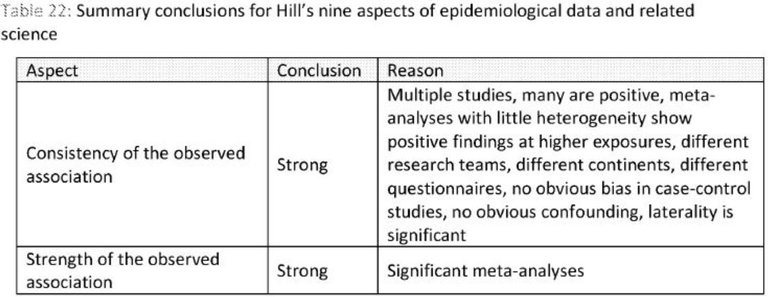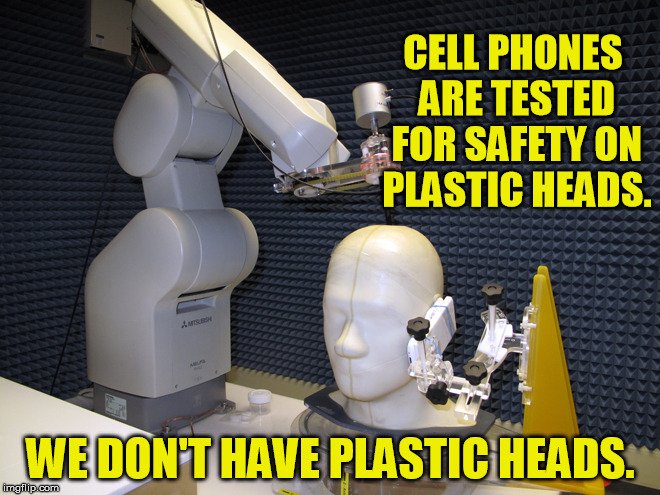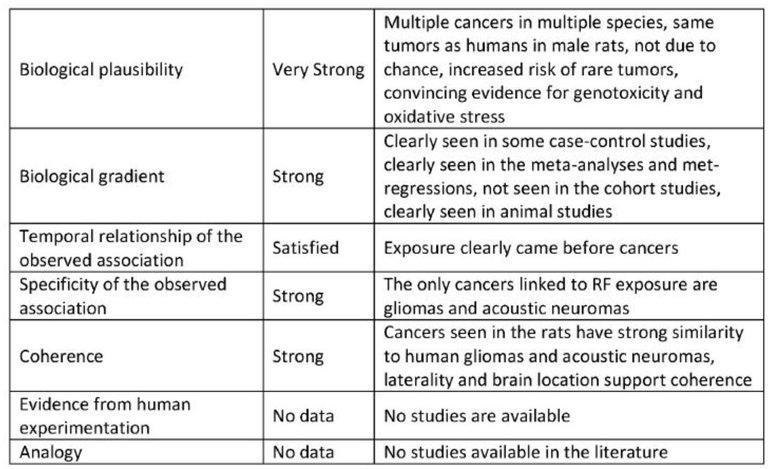By B.N. Frank
Government, independent and industry funded research has determined that exposure to cell phone radiation can at least increase cancer risk (see 1, 2, 3, 4, 5, 6, 7). Another expert recently acknowledged the same.
From Electromagnetic Radiation Safety:
Expert Report by Former U.S. Government Official Concludes High Probability Radio Frequency Radiation Causes Brain Tumors
Christopher J. Portier, Ph.D., former director of the National Center for Environmental Health at the Centers for Disease Control and Prevention (CDC) and the Agency for Toxic Substances and Disease Registry (ATSDR), and a scientific advisor for the World Health Organization (WHO), recently completed an expert report on brain tumor risk from exposure to radio frequency (RF) radiation used in cellphone technology.
After completing a comprehensive review of the scientific literature, Dr. Portier concluded:
"In my opinion, RF exposure probably causes gliomas and neuromas and, given the human, animal and experimental evidence, I assert that, to a reasonable degree of scientific certainty, the probability that RF exposure causes gliomas and neuromas is high."
In 2011, Dr. Portier was selected to represent the CDC on an expert working group convened by the WHO International Agency for Research on Cancer (IARC) to review the carcinogenicity of RF radiation. Based upon recommendations of the expert panel, the IARC declared RF radiation "possibly carcinogenic to humans" (Group 2B) and the following year issued a monograph summarizing the evidence. Because the preponderance of the peer-reviewed research published since 2011 supports the need to upgrade this classification, the IARC has prioritized a new review to be conducted by 2024.
Dr. Portier's 176-page expert report including 443 references was prepared for the plaintiffs in a major product liability lawsuit, Murray et al. v Motorola, Inc. et al., filed in the Superior Court for the District of Columbia against the telecommunications industry. The report appears as Exhibit 3 in a recent filing with the Court.
Christopher J. Portier. Expert Report. Exhibit C. Murray et al. v. Motorola, Inc. et al. Superior Court for the District of Columbia. March 1, 2021. pp. 1-176. http://bit.ly/PortierExpertReport.
The report can be downloaded from: http://bit.ly/PortierExpertReport
Summary Statements from the Expert Report
4.1.5 Conclusions for Gliomas (p. 51)"The evidence on an association between cellular phone use and the risk of glioma in adults is quite strong. While there is considerable difference from study to study on ever versus never usage of cellular phones, 5 of the 6 meta-analyses in Figure 1. are positive and two are significantly positive. Once you consider latency, the meta-analyses in Figure 2 clearly demonstrate an increasing risk with increasing latency. The exposure response meta-regressions in Table 10 and Table 11 clearly indicate that risk is increasing with cumulative hours of exposure, especially in the highest exposure groups. There is a strong tendency toward gliomas appearing on the same side of the head as the phone is generally used and the temporal lobe is strongly suggested as a target. These findings do not appear to be due to chance. The cohort studies appear to show less of a risk than the case-control studies, but one study is likely to be severely impacted by differential exposure misclassification (Frei et al., 2007) and the other (Benson et al., 2012) is likely to have a milder differential exposure misclassification. The case-control studies are possibly impacted by recall bias although that issue has been examined in a number of different evaluations. Selection bias could have been an issue for the lnterphone study, but their alternative analysis using different referent groups reduces that concern. Confounding is not an issue here. In conclusion, an association has been established between the use of cellular telephones and the risk of gliomas and chance, bias and confounding are unlikely to have driven this finding. The ecological studies are of insufficient strength and quality to fully negate the findings from the observational studies.
The data in children is insufficient to draw any conclusions."
4.2.5 Conclusions for Acoustic Neuromas (p. 72)
"The evidence on an association between cellular phone use and the risk of acoustic neuromas [ANs] in adults is strong. While there is considerable difference from study to study on ever versus never usage of cellular phones, 3 of the 4 meta-analyses in Figure 3 are above 1 although none-significantly. The meta-analyses in Figure 4 demonstrate an increased risk in the highest 2 latency groups for the case-control studies that gets slightly higher when the cohort studies are added. For latency >=5 years, the mRRs are significantly elevated for the case-control studies and the combined case-control and cohort studies. The exposure response meta-regressions in Table 19 indicates that risk is increasing with cumulative hours of exposure, especially in the highest exposure groups. This finding, however, is sensitive to the inclusion of the Hardell et al. (2013) [160] study. There is a strong tendency toward ANs appearing on the same side of the head as the phone is generally used, especially as the exposure increases. These findings do not appear to be due to chance. The cohort studies appear to show less of a risk than the case-control studies, but one study is likely to be severely impacted by differential exposure misclassification (Schuz et al. (2011) [99]) and the other (Benson et al. (2013) [102]) is likely to have a milder differential exposure misclassification. Both studies have very few cases. The case-control studies are possibly impacted by recall bias and this cannot be ruled out for the ANs. Selection bias could have been an issue for lnterphone (2010) [67], and, unlike their analysis of the glioma data, they have not looked at an alternate referent population for their analyses of AN. Confounding is not an issue here. In conclusion, an association has been established between the use of cellular telephones and the risk of ANs and chance and confounding are unlikely to have driven this finding. Potential recall bias and selection bias may still be an issue with some of these findings."
5.5. Summary and Conclusions for Laboratory Cancer Studies (p. 86-88)
"The central question to ask of animal cancer studies is "Can RF increase the incidence of tumors in laboratory animals?" The answer, with high confidence, is yes. Table 20 summarizes the findings from the chronic exposure carcinogenicity studies for RF.
For rats, the NTP (2018) [177] chronic exposure bioassay in male Sprague-Dawley rats, including in-utero exposure, is clearly positive for acoustic neuromas of the heart, malignant gliomas of the brain and pheochromocytomas of the adrenal gland. These findings are further supported by the presence of preneoplastic lesions and tissue toxicity in the heart, brain glial cells and adrenal glands. The less convincing findings in the study by Falcioni et al. (2018) [178] of heart acoustic neuromas in male Sprague-Dawley rats and a marginal increase in malignant gliomas in females provides additional support for this finding....
In conclusion, there is sufficient evidence from these laboratory studies to conclude that RF can cause tumors in experimental animals with strong findings for gliomas, heart Schwannomas and adrenal pheochromocytomas in male rats and harderian gland tumors in male mice and uterine polyps in female mice. There is also some evidence supporting liver tumors and lung tumors in male and possibly female mice."
- Mechanisms Related to Carcinogenicity (p. 91)
- Summary of Bradford Hill Evaluations (p. 109)
Table 22: Summary conclusion for Hill's nine aspects of epidemiological data and related science (p. 110-111)

Final Conclusion (p. 111)
"In my opinion, RF exposure probably causes gliomas and neuromas and, given the human, animal and experimental evidence, I assert that, to a reasonable degree of scientific certainty, the probability that RF exposure causes gliomas and neuromas is high."
Christopher J. Portier: Curriculum Vita and Biosketches
Current curriculum vita: see Expert Report, pp. 146-175Emory University: https://sph.emory.edu/faculty/profile/index.php?FID=christopher%20-portier-10021
Maastricht University: https://toxicogenomics-um.nl/staff/Chris-Portier
International Agency for Research on Cancer (WHO): https://www.iarc.who.int/wp-content/uploads/2018/07/PORTIER_Bio.pdf
European Parliament: https://www.europarl.europa.eu/cmsdata/129109/Christopher%20Portier%20-%20Biosketch.pdf
Email ThisBlogThis!Share to TwitterShare to FacebookShare to Pinterest
There is research that has also determined that children are more vulnerable to exposure (see 1, 2). Over the years, there have been numerous articles published as well as TV news segments and documentaries produced about exposure risks from cell phones and other sources of wireless “WiFi” radiation. Nevertheless, warnings about exposure risks haven’t been consistent or universal. A petition has been launched asking the World Health Organization (WHO) to establish more protective EMF and RF exposure limits.
The Phonegate Alert Team and other like-minded organizations raise awareness about exposure risks as well as litigation against cell phones for excessive radiation levels (see 1, 2, 3, 4, 5, 6, 7, 8). In regard to 5G phones, doctors, scientists, and telecom whistleblowers have endorsed a petition to boycott them.
Activist Post reports regularly about unsafe technology. For more information, visit our archives and the following websites:
- Electromagnetic Radiation Safety
- Environmental Health Trust
- Physicians for Safe Technology
- Wireless Information Network
You can support us at SubscribeStar
Donate cryptocurrency HERE
Subscribe to Activist Post for truth, peace, and freedom news. Follow us on Telegram, SoMee, HIVE, Flote, Minds, MeWe, Twitter, Gab and Ruqqus.
Provide, Protect and Profit from what’s coming! Get a free issue of Counter Markets today.




They radiate your head, and also fill your mind with shit, but the masses love them like they love their servitude!
I don't know if it is worth worrying about the exposure of children. How much time do they really spend with a phone next to their heads? My observation is that the younger crowd mostly texts...or videos...or if they are doing something as archaic as talking they are using speaker. Now if bluetooth headphones cause cancer we might have a problem.